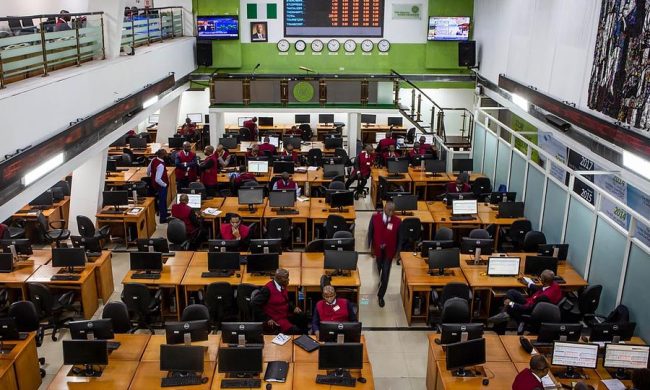Agusto & Co., Nigeria’s foremost research and credit rating agency, recently released a report on the Microfinance Industry in Nigeria (the Industry).
The focal points of the report include a review of the impact of the COVID-19 pandemic on the Microfinance Industry and non-performing loans (NPLs), an assessment of the new capitalisation requirements for microfinance banks, an analysis of the financial performance of microfinance banks and a detailed assessment of the major impediments to growth in the Microfinance Industry. According to the report from Agusto & Co., the COVID-19 pandemic had a significant negative impact on the Microfinance Industry in Nigeria.
The Pandemic and the Technology Gaps
Many microfinance banks in Nigeria, like in most developing countries with relatively low penetration of e-channels, witnessed a doubling of obligations that were past due for up to 30 days (PAR 30) during the first wave of the pandemic and lockdown restrictions in early 2020. Despite up to ₦5 billion spent by the major national and state microfinance banks in Nigeria on the implementation of internet, mobile and USSD banking services, the Industry remains heavily reliant on brick-and-mortar branches for the acquisition of customers and disbursement of loans and the collection of notes and coins for repayment. Given the low technological literacy in the country, collections from Micro, Small and Medium-Scale Enterprises (MSMEs) ground to a halt during the six-week lockdown, even in sectors categorised as essential and in regions not otherwise facing restrictions. The economic environment also did not lend itself to loan disbursements given the sharp decline in business activities while many microfinance banks were caught off guard by the pandemic with few having the infrastructure in place to lend to MSMEs digitally.
READ ALSO: Moderna To Profit $43 Billion From COVID-19 Vaccine Sales By 2023
Rising NPLs in the Microfinance Industry
The doubling of non-performing loans witnessed by the Nigerian Microfinance Industry in 2020 was exceptional in the light of the pandemic, thus many operators had to provide some forbearance and also restructure loans for clients with difficulty repaying as restrictions were gradually lifted. One of the primary strategies adopted by operators in the Industry to drive recoveries in 2020 was to promise customers who met all outstanding obligations access to new loans. Subsequent to the six-week lockdown, many microfinance banks shifted focus to providers of essential goods and services and also existing customers to drive disbursements. The growth in the Industry’s loan book was, however, depressed with the portfolio remaining flat as operators adopted a more cautious approach given the heighten credit risk of MSMEs in key sectors such as education, supply of non-essential goods and services, transportation and hospitality. Agusto & Co. expects to see improvements in the Microfinance Industry in 2021 as the global and domestic economies rebound and operators adjust to the new realities with a 5% growth in the loan book and a 400-basis point drop in the non-performing loan ratio from an average of 12.6% for major operators.
The Pandemic has raised the Stakes for Payment Infrastructure
Microfinance banks in Nigeria have been given a loud wake-up call by the COVID-19 pandemic to accelerate investment in digital channels for loan disbursement and collection. Many operators have since developed web portals for loan applications and are actively exploring the use of payment services such as Remita, Paystack and ultimately mobile money for collections. The efficacy of such channels in Nigeria may, however, be limited by the low digital literacy of the unbanked, underbanked and low-income target market of the Microfinance Industry. Having a strong physical presence in various geographical locations remains the major driver of success in the Microfinance Industry in Nigeria. The largest microfinance banks have branches spread across the country and are easily identifiable to the target market of low-income earners and MSMEs operating in the surrounding area.
Agusto & Co. believes the future success of digital channels in the microfinance space (critically for collections and consequently disbursements) will be strongly dependent on the adoption of digital payments by low-income earners and MSMEs in everyday purchase and sales transactions. On the contrary, if the underlying economic activities continue to be executed in notes and coins, then the fundamental challenge of converting collections to a digital transaction would remain. Notwithstanding, the licensing of three payment service banks (PSB) – Hope PSB Limited, 9 PSB Limited and Moneymaster PSB Limited – may offer a possible solution in the mould of Safaricom’s popular M-Pesa platform in Kenya. Users of the M-Pesa platform in Kenya and other East African countries are able to pay digitally from and to a mobile telephone number for groceries at a market stall, for public transport or for the services of an artisan, for example. This “mobile money” can be used to settle loan obligations using the same platform, thus facilitating digital collections.
Outlook
The two-phased increase in the minimum capital requirements for all categories of microfinance banks to take effect in April 2021 and April 2022 is expected to lead to a reduction in the number of operators from more than 900 to around 500 through consolidation activities as well as failures to meet the new requirements. Agusto & Co. expects the Microfinance Industry to fare better in 2021 supported by the global roll-out of COVID-19 vaccines, accelerated digital transformation of microfinance banks and businesses in general, a renewed focus on essential sectors and government support for MSME businesses. The Industry, however, continues to have a high level of susceptibility to macroeconomic challenges as was witnessed in 2020.














